Csongor SZIGETI G
The Eye 4.1
There are just a few experiences that cannot be captured and shared immediately. Documentability, sharing and online representation are important aspects of most contemporary artworks. The EYE 4.1, on the contrary, provides a one-person experience: looking into the eye-shaped hole of the white cube, with our face we cover the possibility of photo documentation. Our eye becomes the sacred “all-seeing” divine eye, playing a key role, an essential and integral component of the work. It can be replaced, it can be exchanged but every viewer sees a different constellation, and so does any image recording device. The understated external appearance of the object hides an endless world to be discovered on our own.
Csilla Szilágyi
Transfuse 03 Liquid
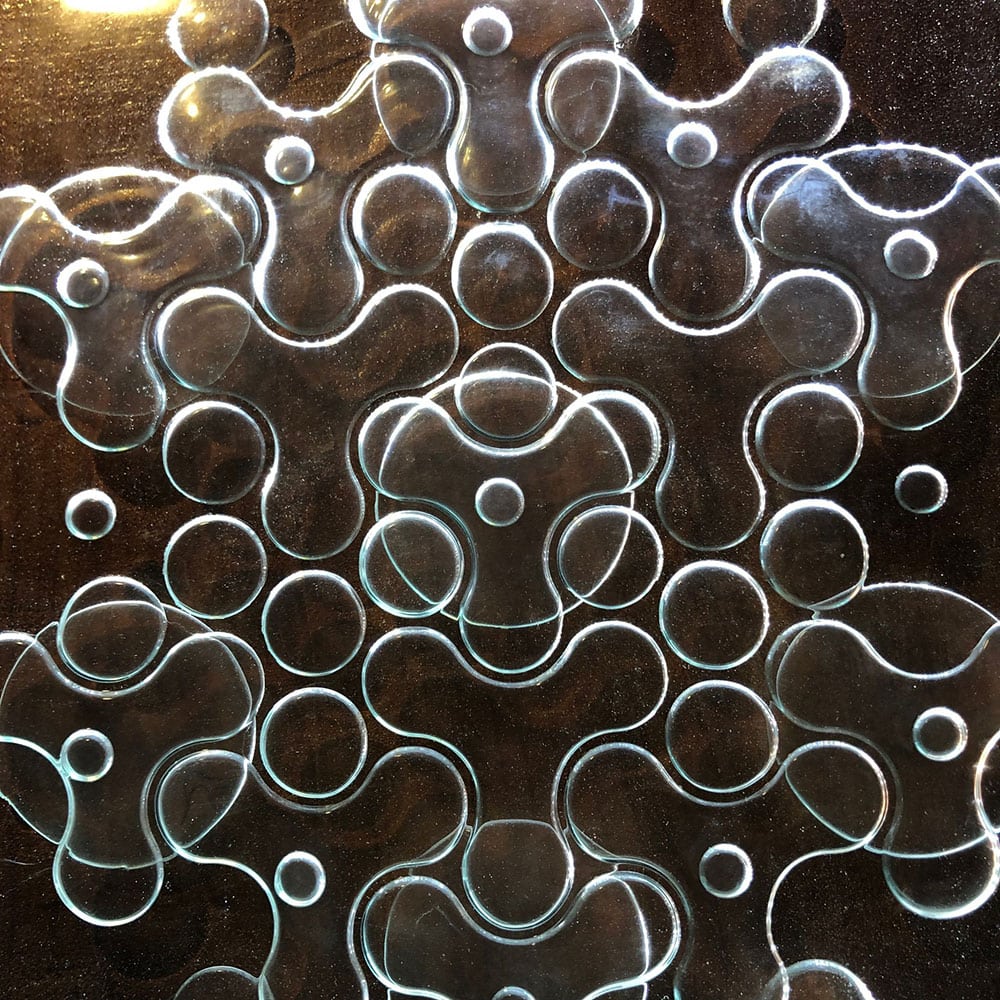
The glass-concrete sculpture entitled the Transfuse 03 Liquid is a section of the vessel beams of an imagined plant. With its central composition, it is shaped on the basis of the triangular grid structure. The juices and nutrients flowing in the plant fibers, and the carbon dioxyde bubbles, as discontinuities in the vessel beams, form the basis of the sculpture. When illuminated, the empty space enclosed between the layers of glass becomes visible and pulsates to the rhythm. This light installation is composed of interactive, pre-programmed LEDs.
László Zsolt BORDOS
Lightforms
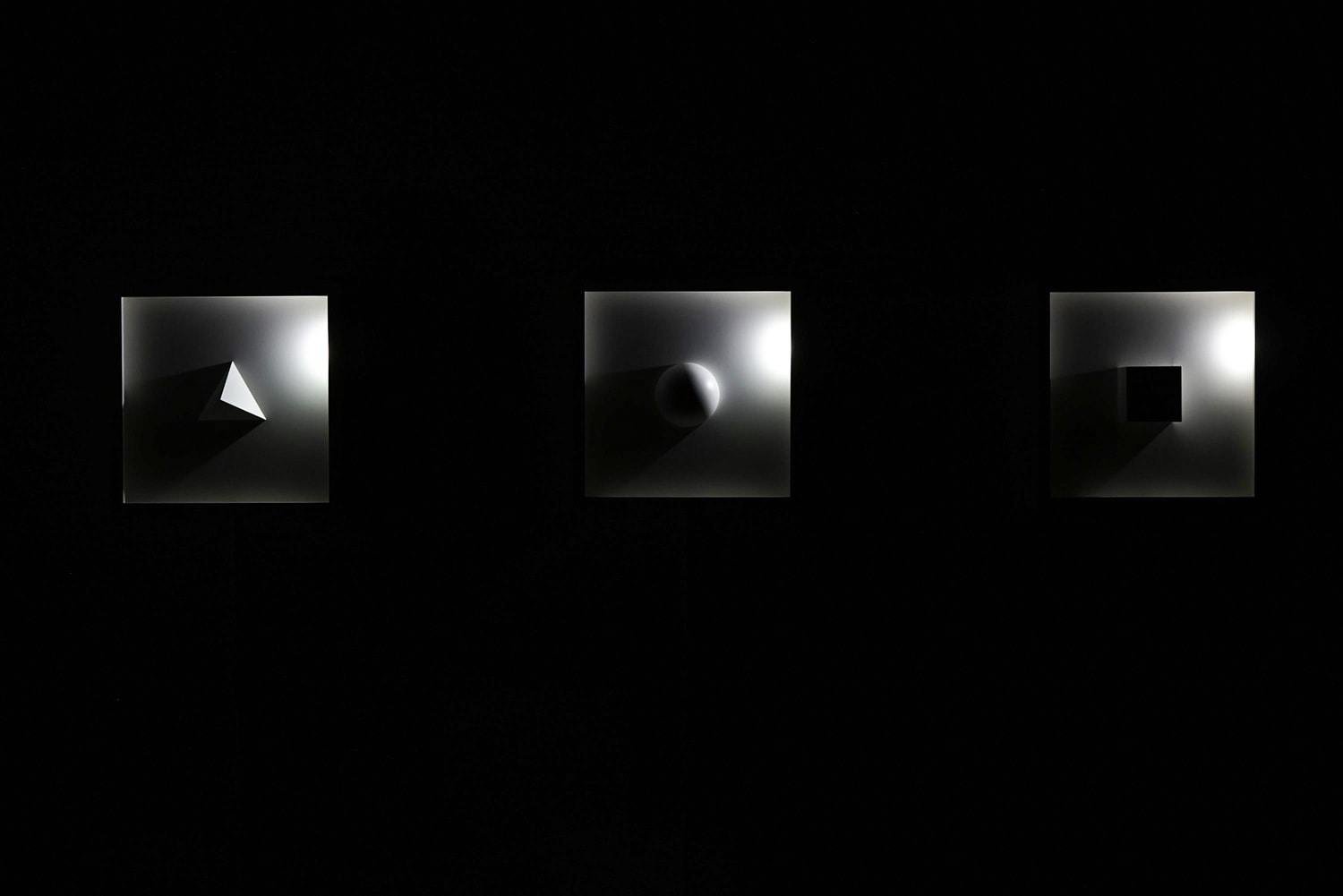
Lightforms of László Zsolt Bordos are objects that study the behavior of primary geometric shapes and the ways they are affected by the lumino-kinetic environment. The moving light source creates a continuous variable of the visual experience. With the movement of light and shadow, the geometric shapes are always brought into new light situations.
The light source moves clockwise and revolves in exactly 1 minute. The triad of the three shapes not only evokes an association of the sundial, but reminds us of the motion of the planets. Mr Bordos’ work invites visitors to a meditative experience of three-dimensional Space and Time.
Gábor KITZINGER
Geohm

The simulation is captured by 4 cameras in the virtual space of the program, which then appears in a Plexiglas pyramid, more precisely in a frustum placed in the exhibition area. The frustum „cuts” the material from another dimension and imports it into our reality in the form of a walk-around hologram.
The generative animation is controlled by the installation’s audio content, but gestures or hand movements of the observer may also interact with it, modifying the accompanying soundwaves. These gestures become the stimuli that partially break and alter the repetitive reality of the object, causing random, unpredictable events in its cyclical permanence.
András Nagy
Perception of Imagination
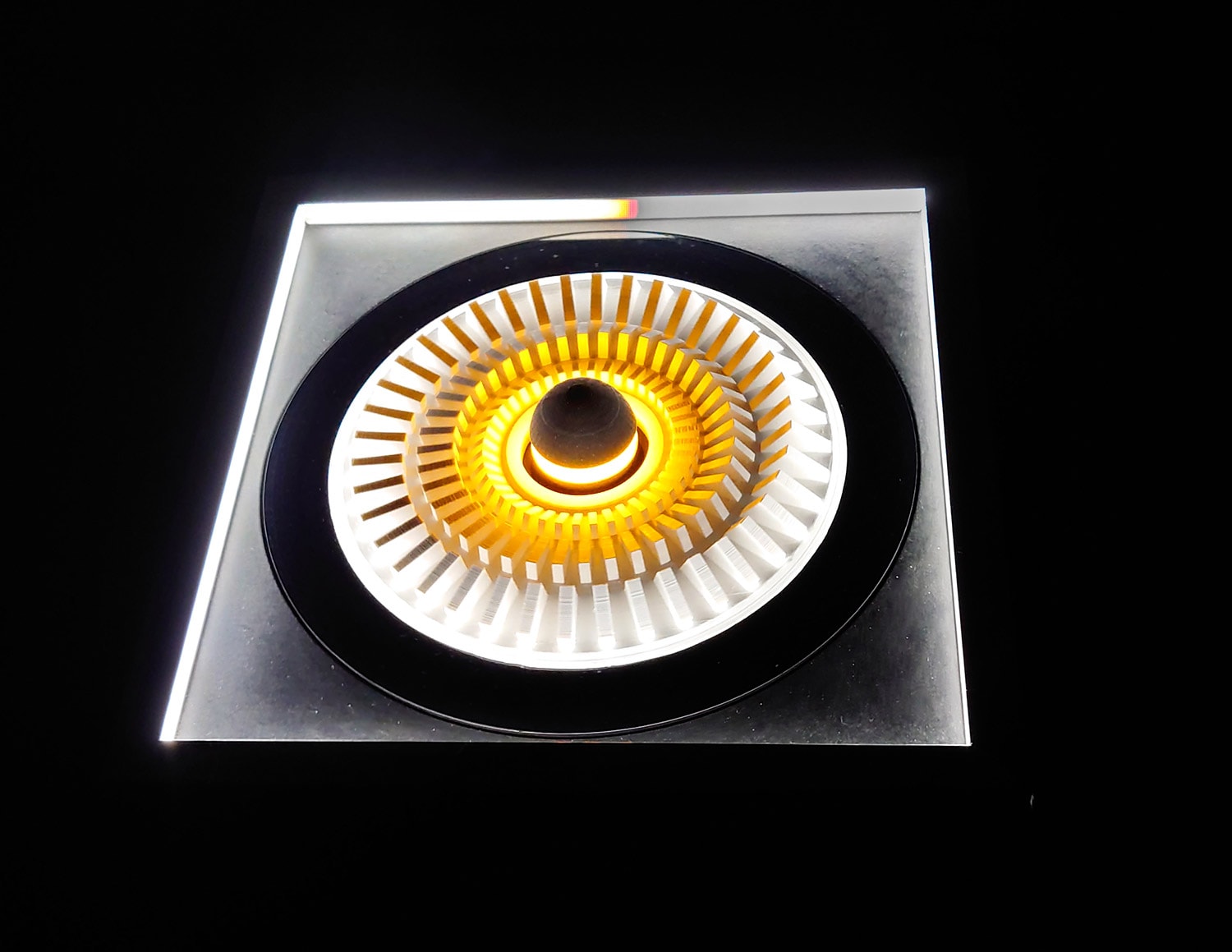
The main task of human perception is to understand sensory information and generate awareness of reality. Physical or chemical stimulation of the senses generates a totality of signals transmitted through the nervous system. However, the perception of the imagination is entirely independent of physical space. It forces our mind to recognize the pattern of the process through our real experiences and memory images. Due to its inertia, our eyes perceive still images arriving in rapid succession as a process of movement. Under the influence of environmental light factors, the reliability of our perception of reality soon becomes questionable.
Erik Mátrai
Aureole cone
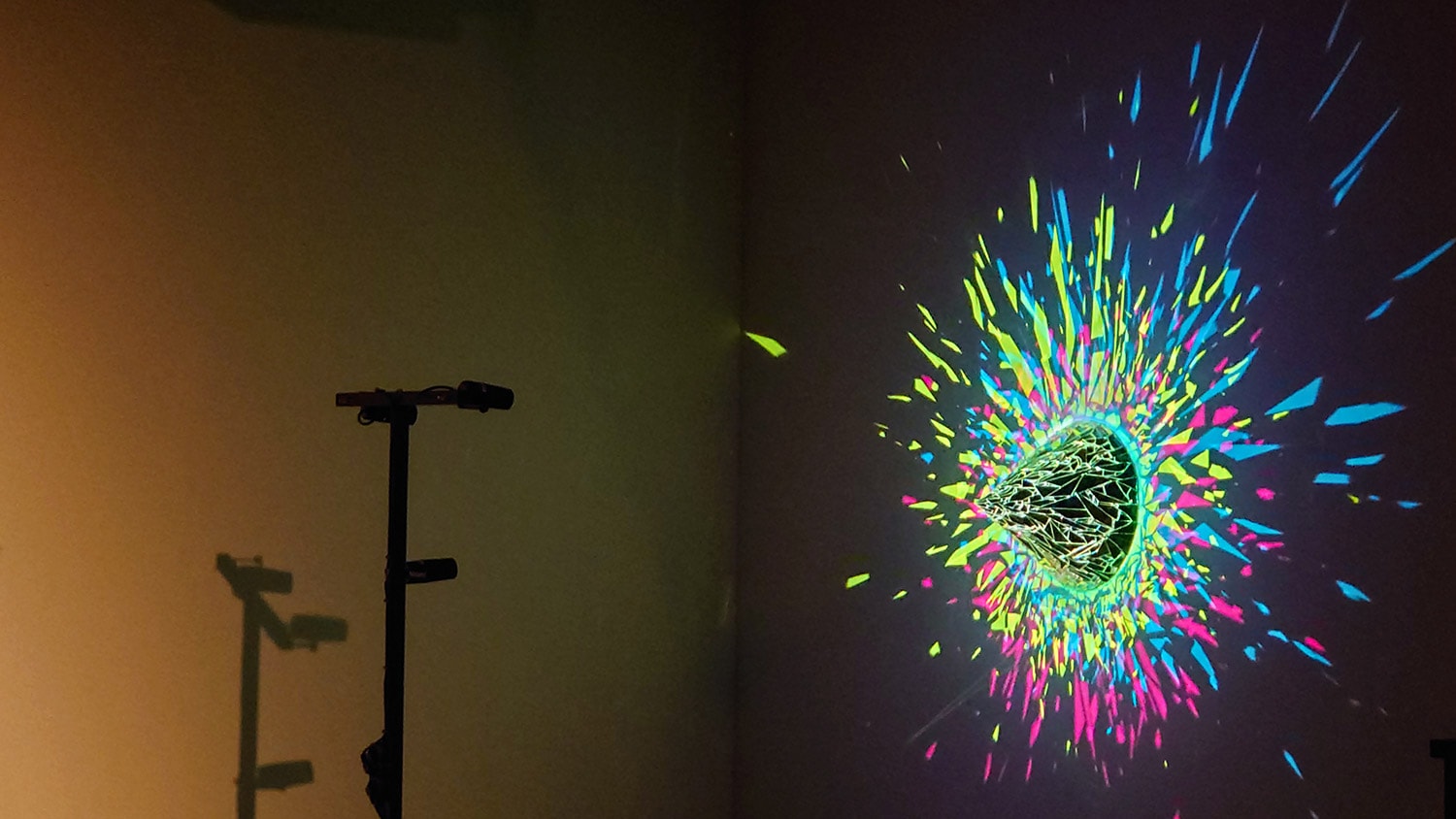
The object, consisting of pieces of mirrors, is illuminated by three coloured light sources. The light reflections create a special auratic field around the piece, a wreath of colorful light beams that come to life whenever passers-by and their shadows move past the object. This work draws inspiration from the Christian motif of the Holy Trinity, represented by the three colors. The spots, where the three colors overlap and become one, turn white, symbolizing the redemptory unity of the triune deity.
Gáspár BATTHA
Patterns of Harmony
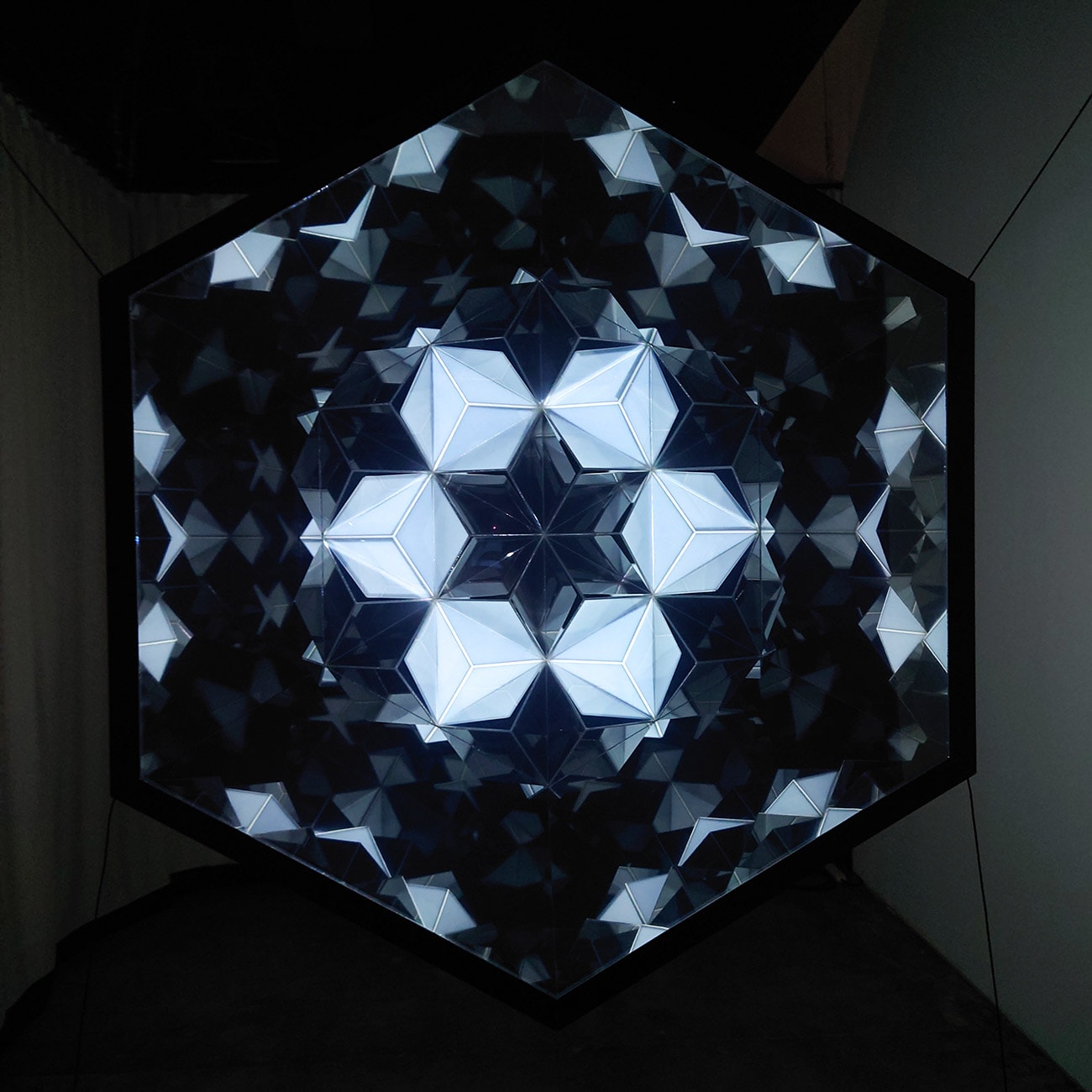
When we zoom in or out of nature, we find recurrent, familiar shapes such as spheres, triangles, pentagons, and all combinations of them. We use these shapes as conceptual tools to define reality, and can therefore consider them as building blocks of the universe. Does the way we perceive spaces and objects actually derive from the universe itself, or is it only an illusion produced by the human sensory system?
Patterns of Harmony seeks the answer to this question by taking a path along the elemental beauty of our nature, all the way to a place far beyond the perceptivity of the human mind: a mesmerizing experience as a fractal of illusions, light and reflections, showing you intriguing morphing shapes that are (not?) really there.
Ivó KOVÁCS
Omnispace
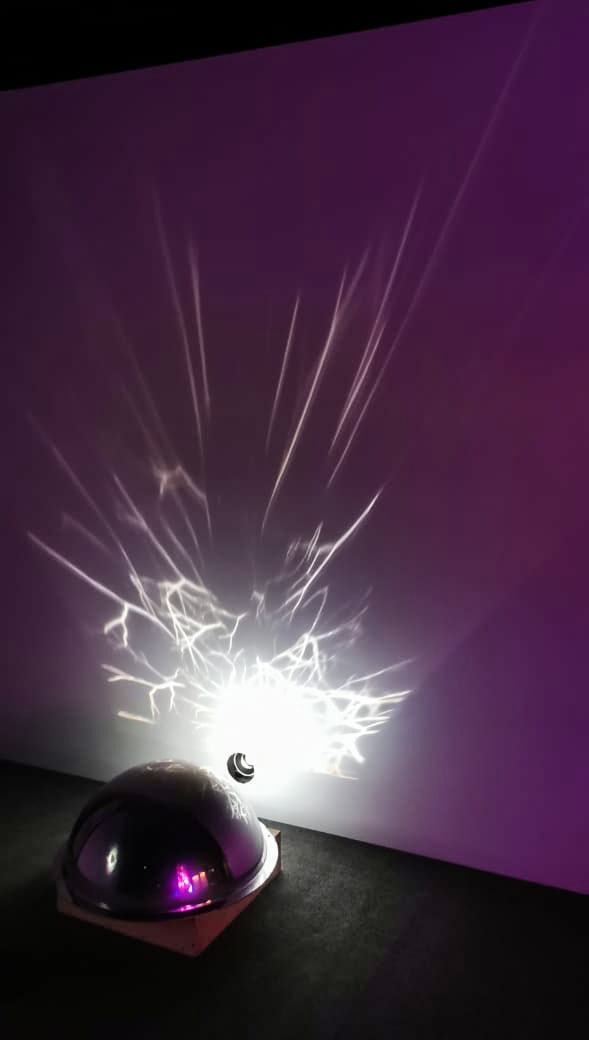
The light art installation “Omnispace” projects onto the wall with a hemispherical mirror. The title of the installation also refers to this single yet multidirectional light source. The artwork invites the viewer to lose themselves in a mesmerizing world of constantly changing light patterns as the distorted image is projected onto the wall of the exhibition space.
The video introduces the theme of the elemental instinctual world and explores our feelings, fears, desires and basic life processes that invisibly influence and distort our perception.